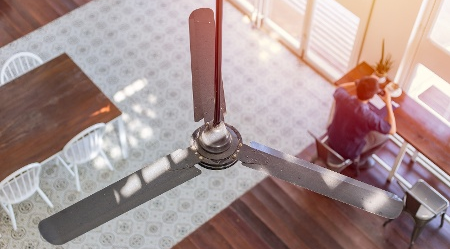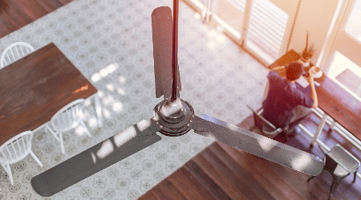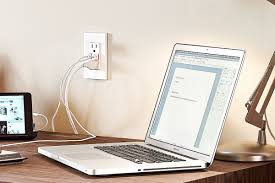It's never to early to prepare for the summer heat and humidity. If you think a ceiling fan is only...
Ceiling Fans: How to Get the Most Benefit
 If you think a ceiling fan is only used to create a breeze indoors, you’re missing out on many other features this fixture has to offer. By adjusting the direction of the rotation and the speed of the fan, you can gain year-round benefits.
If you think a ceiling fan is only used to create a breeze indoors, you’re missing out on many other features this fixture has to offer. By adjusting the direction of the rotation and the speed of the fan, you can gain year-round benefits.
Here’s a guide to help you get the most from each ceiling fan installed in your home.
Choosing the Right Ceiling Fan
To take advantage of all the benefits a ceiling fan has to offer, make sure that the direction of the fan can be reversed. This is a standard feature on most fans. However, the more convenient a function is, the more likely you are to use it. Some fans have a switch on the housing of the fan. If this is how your fan operates, make it a routine in the fall and spring to switch directions. That’s a good time to dust the top of the blades, too.
If you prefer more convenience, remote control or voice command options are available. A remote may have more features than just changing direction. The best remotes will allow you to perform three functions:
- Turn the fan on and off
- Turn the light on or off
- Adjust the speed of the fan to keep your room at the preferred temperature
Using a Ceiling Fan in the Summer
The most common use of a ceiling fan is to circulate air for added comfort in the summer. The downward air movement created by the counterclockwise spin of the fan helps you feel cooler, just like a breeze out of doors on a warm day. Have air conditioning? Don’t make the mistake of assuming air conditioning makes ceiling fans unnecessary. By using your ceiling fans in conjunction with your air conditioning, you can achieve the comfort level you want with less energy. Less energy use, of course, translates into lower electrical bills – something we all appreciate.
Using a Ceiling Fan in the Winter
Since we associate the word “fan” with cooling, the value of a ceiling fan in the winter heating season is often overlooked. Warm air rises. That means most of the warm air generated by your furnace is closer to the ceiling than to the floor. By reversing the direction of the blades on your ceiling fan to turn clockwise, you pull the cooler air up and push the warm air down. Again, your ceiling fan can help lower the cost of heating by simply redistributing the warm air. For this time of year, you’ll want to set your fan at the lowest speed, just enough to create circulation without causing a breeze.
Other Reasons to Change Ceiling Fan Direction
- Smoker in Residence Once you realize that your ceiling fan can either pull air up or push air down, depending on direction, you will start to recognize the versatility of the fixture hanging from your ceiling. If you have a smoker in your home, set the fan to run clockwise to pull the cigarette smoke up and away from the living area.
- High Vaulted Ceilings If your ceiling fan hangs from a high vaulted ceiling, make sure that it has a long downrod to bring the fan as close to standard ceiling height as possible. For these fans, sitting higher in the living space, it is generally considered wiser to keep the fan direction set in the counterclockwise position all year round.
- Over the Dining Table Even in the summertime, having a downward breeze on your dining table might not be the best scenario. Warm food could get cooled too quickly, and paper napkins or other paperwork can get blown off the table, even with a low setting. In this situation, you might get more value from a clockwise direction on your ceiling fan.
At Wilcox Electric, we’re always happy to provide guidance to our customers on which type of ceiling fan to purchase and how to operate the fixture efficiently. Plus, most ceiling fan installations we do take less than 90 minutes.



